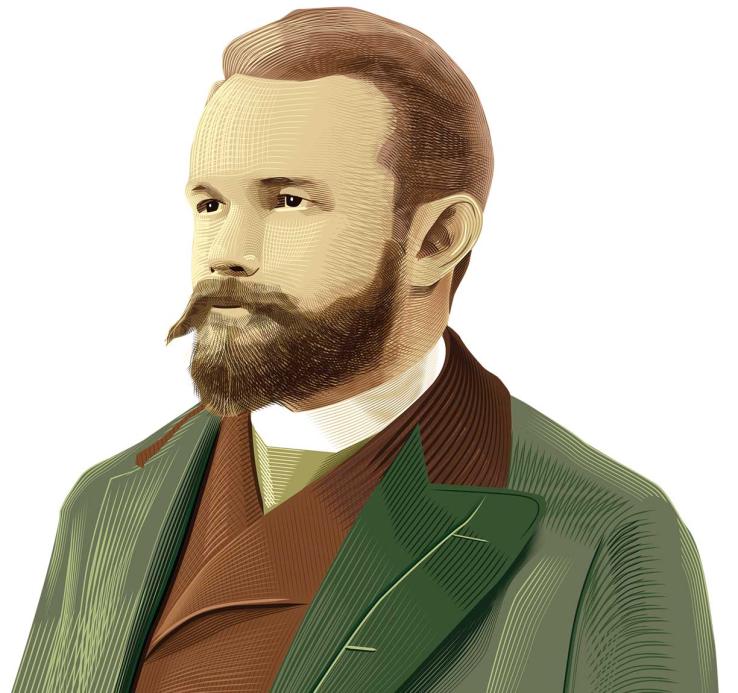
Immortalized by the Libbey Glacier in Alaska and in a trench called the Libbey Deep off the New England coast, William Libbey Jr. was a widely respected geographer, oceanographer, and 1912 Olympic silver medalist in riflery. But he is also remembered by Princetonians as the first person credited with summitting Mount Princeton in Colorado (in 1877), and for popularizing Princeton’s color scheme of orange and black.
As a freshman, Libbey began to wear an orange and black necktie to honor William III of England, Prince of Orange-Nassau, after whom both Nassau Street and Nassau Hall had been named. He was not the first student to use the colors: In 1867, George Ward 1869 gave his baseball teammates orange and black badges. It turned out that both students got the colors wrong: The true colors of the House of Nassau were orange and blue.
No matter. In his sophomore year, with financial support from his father, Libbey arranged for the manufacture of 1,000 yards of orange and black ribbon for use as the freshman crew’s hatbands at an intercollegiate rowing regatta in Saratoga, New York. After the Princeton crew won, he sold out his remaining supply of ribbons in short order by promoting them as “Princeton colors.” In 1896, when trustees changed the college name to Princeton University, they also adopted orange and black as the school’s official colors — despite the objection of Professor Allan Marquand 1874, who felt that orange and blue would have been preferable.
In the town of Princeton, Libbey took a leading role in planning and supervising the water supply, the sewage plant, and the town’s first telephone system.
Two years after graduating from Princeton — then named the College of New Jersey — Libbey received his Ph.D. in geology from his alma mater, becoming the first in the United States to earn a doctorate in that field. After further study in Berlin and Paris, he was invited back to Princeton to assist his mentor, Arnold Guyot, in teaching physical geography, meteorology, and terrestrial magnetism and to become the first director of the school’s Elizabeth M. Marsh Museum of Geology and Archaeology, which had been paid for by his father — a college trustee — and named after his mother. In 1884, Libbey was named to the first American professorship solely devoted to geography, a position he held for 40 years.
Libbey complemented his Princeton teaching with research in the field. In 1893 he traveled to Hawaii on an expedition sponsored by the Academy of Natural Sciences of Philadelphia, spending 10 days studying the crater of Mount Kilauea, which was erupting; his spectroscopic analysis was the first to detect the presence of hydrogen in the gas of any volcanic eruption. The next summer, he joined Robert E. Peary’s expedition to Greenland, helping geologist Thomas C. Chamberlin with his research on glaciers. In 1902 he went to the Middle East to conduct an extensive study of Jordan’s Rift Valley.
Through it all, he never neglected his home. In the town of Princeton, Libbey took a leading role in planning and supervising the water supply, the sewage plant, and the town’s first telephone system, and he and his wife, Mary, donated a substantial sum to help purchase land for what would become Princeton Battlefield State Park. He was especially active on campus, where, in addition to directing the University’s museum and teaching, he served as grand marshal of all public ceremonies. With classmate Moses Taylor Pyne, he compiled and edited the first three editions of the Princeton alumni directory, translated the college catalog from Latin into English, and published a 128-page book on Princeton’s role in the Spanish-American War. In 1909 he oversaw the building of Guyot Hall, named for his mentor, to house the University’s departments of geology and biology.
While relatively few Princetonians will visit Libbey Glacier or see Libbey Deep, many will enjoy visiting the Princeton battlefield, perhaps in orange and black. For that experience, they will have William Libbey to thank.
